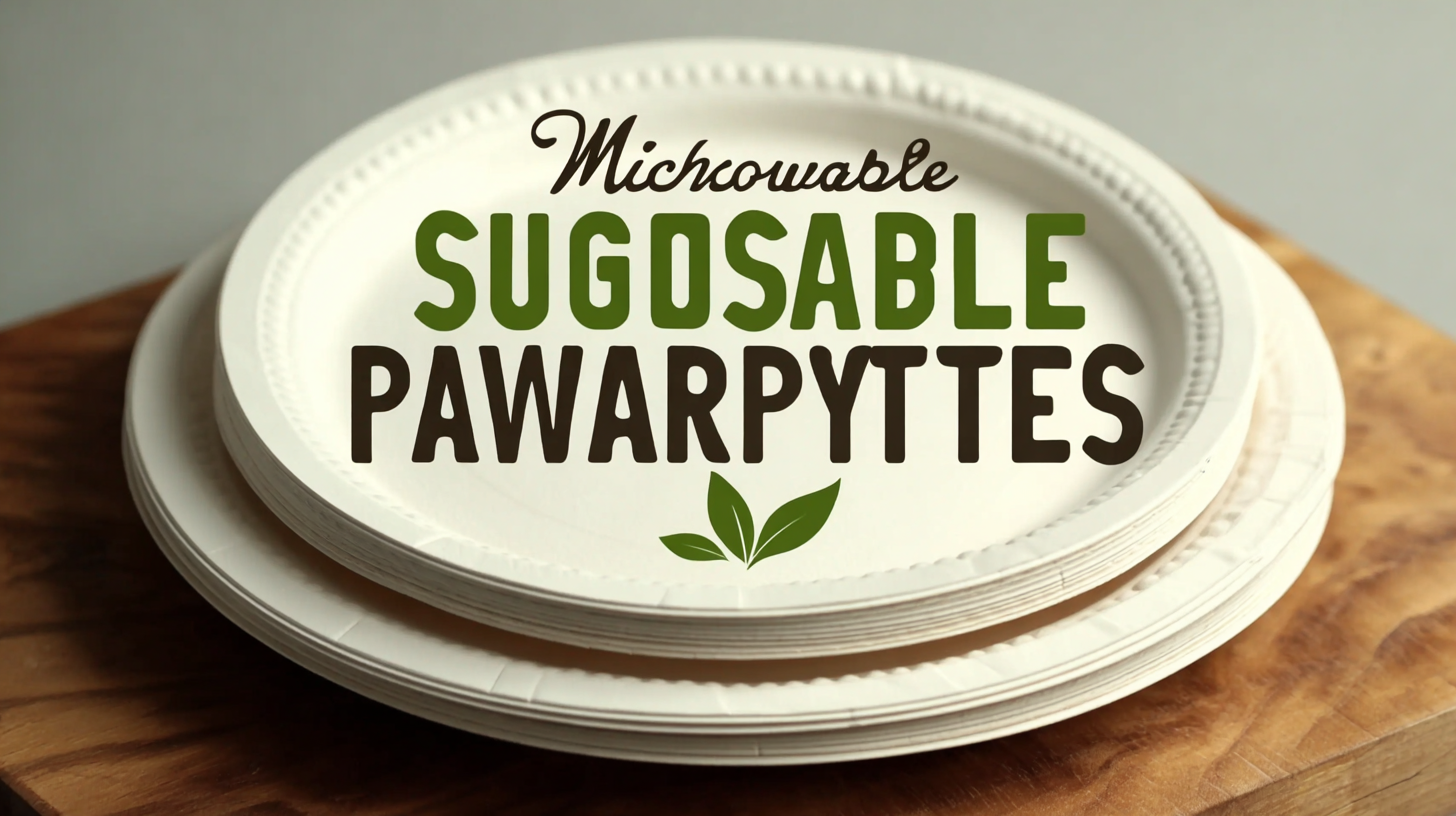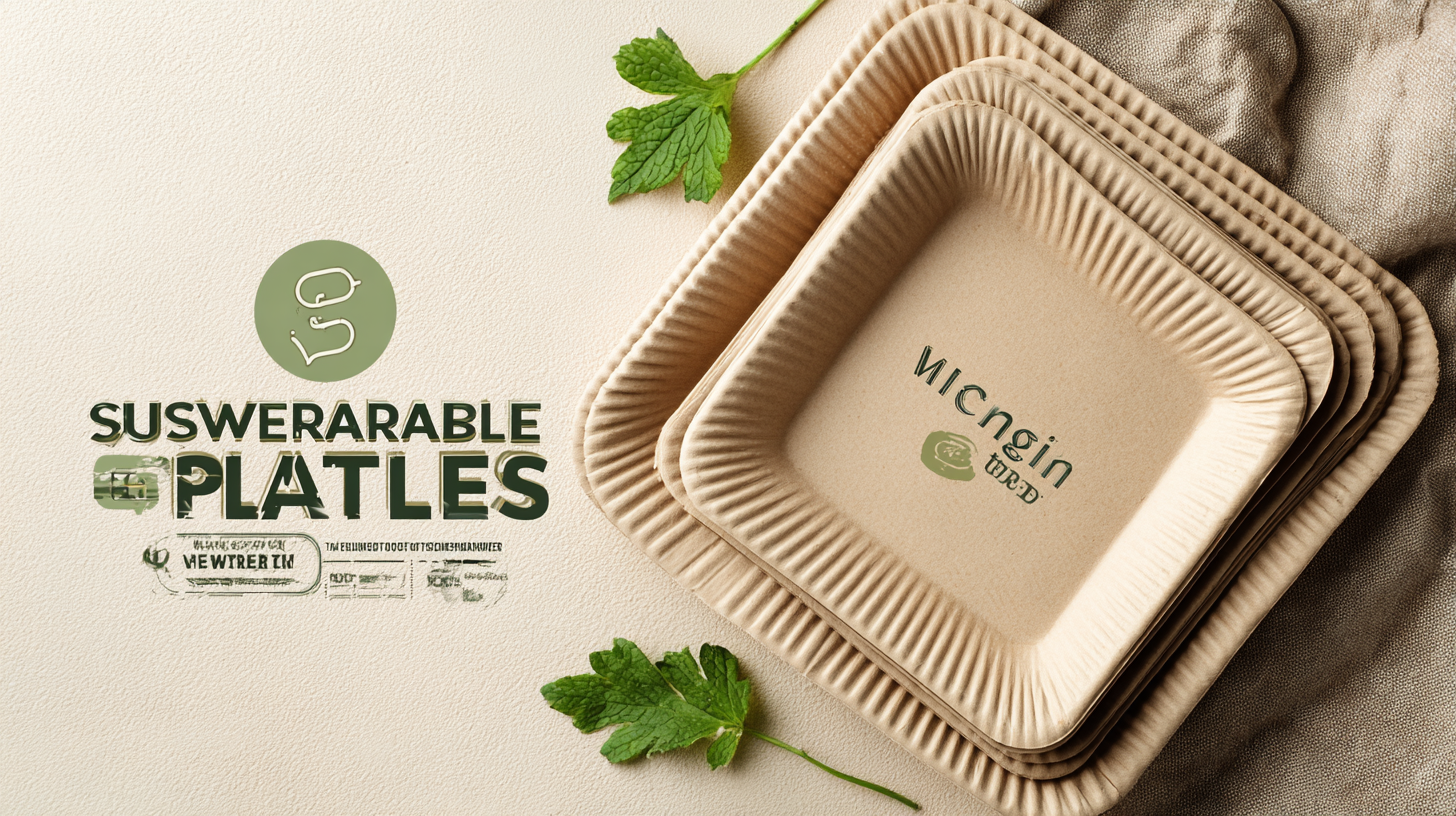Leave Your Message
In recent years, the push for sustainability has significantly influenced various industries, including food service and packaging. The growing environmental consciousness among consumers has led to a remarkable rise in the popularity of Microwave Paper Plates, which provide a more eco-friendly alternative to conventional plastic and Styrofoam products. According to a report by Market Research Future, the global disposable paper plate market is projected to reach USD 9.6 billion by 2025, with a substantial portion attributed to the increasing demand for biodegradable options. As restaurants and catering services adapt to regulatory pressures and consumer preferences, the trend towards Microwave Paper Plates is set to gain momentum. This shift not only underscores the importance of sustainable practices but also highlights innovation in materials that ensure both convenience and environmental responsibility, as we embrace the significant changes anticipated in 2025 and beyond.

As the demand for eco-friendly products continues to surge, the sourcing of materials for microwave paper plates has become a focal point within the industry. According to a 2023 report by Smithers Pira, the global market for sustainable packaging materials is expected to reach USD 500 billion by 2026, highlighting the significance of sustainable sourcing. Companies are now prioritizing materials that are not only biodegradable but also sourced responsibly, reducing their carbon footprint while meeting consumer expectations for greener options.
Material sourcing directly impacts the overall sustainability of microwave paper plates. For instance, utilizing recycled fibers rather than virgin pulp can reduce energy consumption by up to 60%, as reported by the Paper and Packaging Board. Furthermore, sourcing from certified sustainable forests ensures that production does not contribute to deforestation, aligning with industry trends that favor transparency and ethical practices. As brands embrace these sourcing strategies, the future of microwave paper plates looks promising, reflecting a growing commitment to environmental stewardship in the foodservice packaging sector.
| Material Type | Sourcing Region | Sustainability Rating (out of 5) | Cost per 1000 Plates (USD) | Market Demand Trend (2025) |
|---|---|---|---|---|
| Recycled Paper | North America | 5 | $150 | Increasing |
| Sugarcane Bagasse | South America | 4 | $180 | Stable |
| Palm Leaf | Asia | 5 | $220 | Growing |
| Compostable PLA | Multiple Regions | 4 | $200 | Increasing |
| Wood Fiber | Europe | 3 | $170 | Decreasing |
As sustainability continues to drive choices in the foodservice industry, the demand for microwave-safe paper plates is on the rise. By 2025, industry reports project that the global market for sustainable food packaging will reach a staggering $300 billion, underscoring the need for innovative products like microwave paper plates that meet both consumer and environmental expectations. When selecting these plates, durability, heat resistance, and compostability are key features that set the best options apart.
Tip: Always look for microwave paper plates that are certified by reputable organizations for compostability and safety standards. This ensures that the products not only perform well in the microwave but also align with your sustainability goals.
In addition, consider the manufacturing process of the paper used in these plates. Eco-friendly options often utilize recycled materials and water-based coatings to minimize environmental impact. Research indicates that plates made from bamboo or sugarcane pulp are not only biodegradable but also showcase excellent heat resistance, making them ideal for hot meals.

In the evolving landscape of sustainable packaging, the shift towards microwave paper plates represents a significant trend for 2025. As consumers become more environmentally conscious, manufacturers are prioritizing certifications and environmental standards that reflect their commitment to sustainability. Companies must not only meet health and safety guidelines but also engage in eco-friendly practices, ensuring that their products are biodegradable and sourced from renewable materials.
To ensure you’re choosing the best microwave paper plates for your needs, look for reputable certifications such as FSC (Forest Stewardship Council) and compostability endorsements. These certifications guarantee that the products adhere to strict environmental regulations. Additionally, consider the manufacturing process; brands that utilize recycled materials and low-impact production methods are likely to minimize their carbon footprint.
When evaluating manufacturers, transparency is key. Seek out companies that openly share their sustainability practices and environmental impacts on their websites. Engaging with brands that actively promote their adherence to environmental standards not only supports sustainable industry growth but also encourages a culture of accountability within the market. Always remember, choosing eco-friendly products is a collective effort that can lead to meaningful change in our environment.
When evaluating microwave paper plates in 2025, the interplay between cost and quality becomes increasingly crucial for consumers and manufacturers alike. As sustainability becomes a central theme in the food service industry, the demand for eco-friendly alternatives is on the rise. However, balancing affordability with superior performance remains a challenge. Cheaper options may save money upfront but often compromise on durability and heat resistance, leading to potential safety hazards or inconvenience during meal times.
Conversely, higher-priced microwave paper plates typically offer better quality, such as sturdy construction that withstands high temperatures and moisture without leaking or warping. Investing in premium products may yield long-term benefits, including reduced waste and enhanced consumer satisfaction. Ultimately, stakeholders in the food industry must carefully consider their needs and budgets, as the trend toward sustainable, microwave-friendly solutions continues to evolve. Understanding the economic implications of choice will play a pivotal role in shaping purchasing decisions for both individuals and businesses in the coming years.
The food industry is witnessing a transformative shift towards sustainable packaging solutions, driven by heightened consumer awareness and regulatory pressures. As the trend towards eco-friendly materials solidifies, businesses are increasingly exploring alternatives like seaweed-based packaging, which not only reduces environmental impact but also enhances the edible packaging spectrum. This movement reflects a broader commitment to sustainability that permeates various sectors, including fast food and seafood packaging, which are adapting to new consumer behaviors and preferences.
India's burgeoning paper packaging industry, projected to grow at an impressive CAGR of 26.7% from 2019 to 2025, exemplifies the global pivot towards sustainable practices. Innovations in renewable materials and the optimization of packaging designs are reshaping the landscape. As businesses align with sustainability goals, packaging is evolving to become recyclable and reusable, reinforcing its role as a pivotal element in the supply chain. This surge in sustainable packaging strategies not only addresses food waste and disposal issues but also resonates with a growing consumer demand for responsible consumption, marking a significant step towards greener industrial practices.

